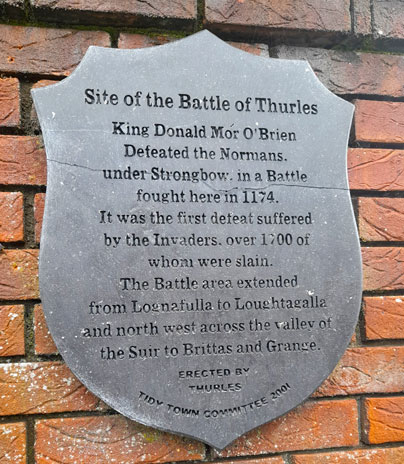Firstly, shame on Thurles Elected Politicians, Councillors and the senior officials who over-rule them, within Thurles Municipal District and County Council, all of whom have allowed this beautiful river Suir asset, to fall into a state which resembles that of an unkempt sewer, while claiming to have lost the power to control its continuing deterioration.
The Suir
From Its Source to the Sea.
Extract from the book by author L. M. McCreith,
(Author of “Cashel of the Kings”.)
“………The gentle Suir, that, making way by Sweet Clonmel, adorns rich Waterford”.
Quote taken from Spencer’s “Faerie Queene”*.
Originally Printed by the Clonmel Chronicle Newspaper and Printing Works Ltd. (1848 – 1935)
* The “Faerie Queene” referred, is an English epic poem by Edmund Spenser, with over 36,000 lines and over 4,000 stanzas. It remains one of the longest poems in the English language and was presented to Queen Elizabeth I in 1589, probably sponsored by Sir Walter Raleigh, latter who was one of the principal landowners and colonists in Munster and who was later beheaded by English King James I.
This extract written in 1912, (110 years ago) states: –
“Some 8 miles from Templemore, spreading itself on both banks of the Suir, is the ancient town of Thurles. The town has a distinctive, old world, almost ecclesiastical, character of its own.

Its name is a corruption of the Irish Durlas, a fortress. In the “Annals of the Four Masters”, we read of a chief of Durlas, by name Maelduin, who was slain in 660 A.D.
Thurles was the scene of one of the few signal defeats of the Danes by the Irish. This took place in the 10th century and was long remembered and recorded locally.
As has been said, Thurles was also the scene of the defeat of Strongbow, by a coalition of Irish Chiefs in 1174. When Strongbow heard that Connor and Donal Mor we’re advancing against him, he sent to Dublin for help. A contingent of Danish settlers and Norman soldiers, natural allies, came to his assistance. They endeavoured to join him at Thurles, but there, by the banks of the Suir, 1700 of Strongbow,s men were slain.
Donal Mor O’Brien was in command that day and it would seem that the field was a fortunate spot to him; for when he returned to that same place 17 years later, to fight another battle against the English, he was again victorious. In 1197 however, 6 years afterwards the English took Thurles and “burnt many churches and temples”.
Among the many notable Norman’s who established themselves in Ireland (and in time became “more Irish than the Irish”), where the Butler’s. Theobald FitzWalter came in the train of Henry II, in 1172. He was kin to Thomas A’ Becket, and it was part of the King’s accepted penance that he should ennoble all the murdered Archbishop’s relatives.
Henry II gave FitzWalter large grants of Irish land, in return for which FitzWalter was to act as the King’s chief Butler and to hand him a cup of wine after his coronation. Hence the name of the family.
The Butlers ever remained loyal to the Sovereign, whose vassals they were and were frequently in opposition to the other powerful Norman House, the Fitzgerald’s or Geraldine’s, who are descended from Strongbow’s Knight, son-in-law and right-hand, Raymond le Gros and were represented by the earls of Kildare and Desmond.
The Butlers obtained large possessions in Wicklow and in fertile Tipperary, and early in the 13th century became possessed of Thurles. The Butlers were ever notable as castle-builders and founders of religious houses. They began to build on the banks of the Suir. Within the last half-century there were remains of no fewer than 9 castles in this town.
James Butler was created Earl of Ireland in 1328. About that time (1324) he caused the Castle to be built, the Norman keep of which still guards the bridge across the slow-flowing river. The Butler’s also built or endowed Carmelite and Franciscan monasteries in Thurles and there, as well as Templemore, the knights Templars established a Preceptory. Viscount Thurles still remains the inferior title of the Marquis of Ormonde, the head of the Butler family.
Thurles today is an important and thriving town of about 5,000 inhabitants. It has a notable horse fair and it is the centre of a rich grazing and grain growing district. It is the seat of the Archbishop of Cashel and diocese of Emly, and contains a magnificent Roman Catholic Cathedral and a handsome archiepiscopal residence. The bells and the organ of the Cathedral are notably fine. There is also a fine Roman Catholic college, two convents and a monastery, the hole forming as it were a, kind of religious quarter.
Thurles was the scene of the famous Roman Catholic synod in 1850.
From Thurles onwards the Suir flows through the county of which the poet Spenser (Edmund) said that it was ‘the richest champagne that may ever be rid’.”

Leave a Reply